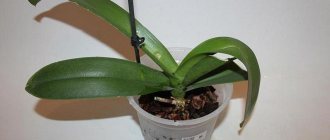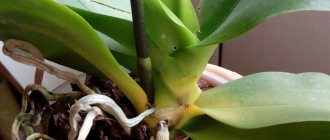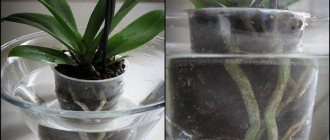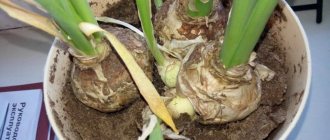Saintpaulia or Uzambara violet is a low-growing herbaceous plant of the Gesneriev genus. In the wild, it is found in the mountainous regions of Kenya and Tanzania near rivers and waterfalls.
It became known in Europe in 1893, when a flowering plant was grown from seeds sent from East Africa. Saintpaulia violetflower received its name in honor of its discoverer, Saint-Paul Illaire. It is a perennial plant that forms a rosette with green velvety leaves with pointed tips. Saintpaulia flowers range from 2 to 5 cm in diameter.
There are
several types of flowers:
- simple;
- terry;
- corrugated.
With proper care, violets can bloom up to 8 months a year. But sometimes, for no apparent reason, Saintpaulia begins to fade. At this moment, it is important not to overlook the problem and take measures to save the plant. Otherwise, the flower may die or stop blooming.
Wilting should never be ignored.
What to do if the violet withers?
If the violet has lost turgor, this clearly indicates problems - either with the conditions of detention or with the health of the plant. Next, we will look in detail at the reasons for flower wilting.
Adjustment of external growing conditions
For all its unpretentiousness, violet makes demands on:
- illumination;
- watering;
- temperature conditions;
- feeding;
- ground;
- the size of the pot.
Violation of any of these rules can lead to withering of the plant, loss of turgor by the leaves and even death.
Lighting requirements
Saintpaulias love light, but not direct sunlight. To feel comfortable and bloom, it must receive lighting for 12-14 hours a day.
The most suitable place for home violets is the southeast and southwest window sills . Morning and evening sun will only benefit the plant. A southern windowsill is undesirable for growing this flower. Under the blinding rays of the sun, the violet leaves will wither and burn. Temperatures above 25 degrees are uncomfortable for them.
Violets can get burned from too much sun.
If the violet begins to fade due to too bright sunlight, it must be dimmed using:
- blinds;
- newspapers;
- remove the flower from the windowsill.
Cold northern window sills are suitable for delicate southern plants if there are no drafts. At temperatures below 15 degrees, the flower stops developing. Violet can drop its leaves due to sudden temperature changes and does not like to stand near open windows in the wind.
Attention! When growing violets with artificial lighting, you should turn the flower from time to time to the light source in different directions to avoid bending the rosette.
Watering
Violets have special requirements for watering. Both a lack and an excess of water will cause the flower to wilt. An excess will entail:
- the appearance of midges;
- the occurrence of fungal diseases;
- Root rotting and plant death.
Water the violet with settled warm water if:
- the soil is 2/3 dry;
- When compressed, the leaves are soft and crumple; if the leaves are elastic, watering is not required yet.
The most preferable would be to water from below, when the flower is placed in a tray with water that does not reach slightly to the top of the pot. As soon as the surface of the soil begins to shine from the water that has come out, the plant should be removed from the pan and the excess moisture should be allowed to drain. The next watering is carried out after the earthen clod has dried, after 1-2 weeks .
It is possible to water violets from a watering can with a narrow spout under the root , avoiding water getting on the leaves and flowers, but in this case the soil is washed away and the roots are exposed, which has an undesirable effect on the development of the plant.
Sometimes, in order to wash off the dust from the leaves you can give Saintpaulia a shower , but in this case it is necessary to let the leaves dry completely and then return them to their permanent place of residence, otherwise sunburn may appear on the wet leaves.
If the soil in the pot is too dry, the thin roots of the violet begin to die. To restore the plant, you should not immediately water it abundantly, otherwise it may get sick.
The frequency of watering depends on the season . If Saintpaulia is placed on a windowsill located above a heating device, the soil in the pot dries out very quickly. The best option is to remove the flower to another place and use artificial lighting in the dark.
Top dressing
Throughout the growing season, in order for the plant to feel comfortable and gain strength for flowering, violets require constant feeding.
At the beginning of spring, plants weakened over the winter are given a complete complex fertilizer with microelements, with a predominance of nitrogen, so that the green mass grows. You can also use home remedies for these purposes, but complex fertilizers are preferable.
Try to use specialized products for violets.
Further, during the period of budding and flowering, phosphorus-potassium fertilizers are required.
Advice! Only if the plant is fully supplied with macro- and microelements will the violet delight with green foliage and bright flowers. But excessive application of fertilizers will also lead to either too rapid growth of foliage or its wilting.
Air temperature and humidity
The optimal conditions for violets will be at an air temperature of 18-22 degrees. At lower rates they freeze and stop developing, at higher rates they fade.
Plants are also demanding on air humidity. It should be about 60-70%. Since dry air is harmful to violets, place a container of water next to the pot.
You should also avoid keeping plants near fans and running air conditioners.
Correct selection of soil
A limp violet indicates that its pot may have acidified and dense soil . Since the violet, which blooms for a long time, constantly needs nutrients, it receives them in 2 ways:
- from fertilizers;
- from the soil in which it is planted.
Therefore, it is necessary to replant the flower once a year due to the severe depletion of the soil in the pot and its compaction. When planting, it is necessary to take water- and breathable soil. A mixture suitable for this:
- leaf soil;
- turf;
- coniferous;
- high peat;
- sand.
The soil for violets should be very loose.
When adding vermicompost, you need to add raising agents:
- vermiculite;
- perlite;
- coconut fiber;
- sphagnum moss.
Expanded clay is placed on the bottom as drainage, then charcoal, you can add eggshells to reduce acidity, and a prepared or purchased mixture for violets on top. The correct approach when preparing the mixture and planting will ensure comfortable growth and flowering for the violet.
Selection of planting pot
Ideally, the violet rosette should be 3 times larger than the planting container . The roots of Saintpaulia are close to the surface of the earth, so the flower does not need a deep pot.
When planting a plant in a large container, it will not bloom for 2 years, and will devote all its energy to developing the territory and increasing the green mass.
Soil that is not mastered by roots begins to deteriorate and turn sour, which leads to illness and the appearance of fungal diseases. The plant loses turgor and withers.
Diseases
Violets wither due to the following diseases:
- powdery mildew;
- root rot;
- rust;
- bacteriosis
Diseases usually appear in late winter or early spring, when the plant is weakened.
Reference! To prevent fungal diseases, water violets once a month with a weak solution of potassium permanganate.
Downy mildew can be recognized by yellow, brown spots on the outside of the leaf, and a gray coating appears on the inside. A sign of powdery mildew is a white powdery coating on the surface of the leaves. They fight the scourge with the help of folk remedies and fungicides.
Powdery mildew.
Rust appears as rusty spots on the front of the leaves. Colonies of yellow fungus are visible on the inside.
In 75% of cases, the cause of wilting of violets is root rot . To check this, you need to dig up the flower and examine the roots. The absence of white roots confirms the disease. The cause of root rot is increased watering of the plant after a prolonged drought.
Pests
pests of violets are:
- mites;
- aphid;
- thrips;
- mealybug.
The tick is so small that it is impossible to see it with the naked eye. But if a cobweb appears on the flowers and leaves and the plant begins to wither, a tick has attacked. They drink plant sap and, if timely measures are not taken, the flower will die.
Spider mite.
Aphids can be recognized by the yellow trails they leave on the leaves and by scattered pollen.
The mealybug settles in buds and young leaves.
Violet lost turgor after transplantation: what to do?
Have you repotted a plant and the next day you are horrified to discover that its leaves have drooped, despite the moist soil in the pot? Watering in such a situation is clearly pointless. How then can we help the plant?
First, let's figure out what happened and why the leaves withered?
The root system of a plant is not only clearly visible branching roots, but also small (sometimes barely noticeable) roots, which, in fact, absorb moisture from the soil, supplying it to the above-ground part of the plant.
With any transplant (it doesn’t matter whether you washed the roots or simply shook off the old substrate), these short and thin roots are the first to suffer. Therefore, many plants with thin leaves wilt after transplantation - despite the moist soil, they have nothing to absorb moisture. This is not observed in plants with dense, leathery leaves, because such leaves contain a supply of water and nutrients that allows them to survive an unfavorable period without significant losses.
The root system needs some time to master the new substrate and restore the functionality of the suction roots. While this process is going on, we must provide the plant with the moisture it needs. To do this, we will water it through the leaves, thereby stopping the dehydration process, and to reduce the amount of moisture evaporating from the leaf plates, we will build a greenhouse. All we need is a very ordinary plastic bag (preferably thin and always transparent) and 3-4 long sticks or knitting needles.
So let's get started. Spray the leaves with warm water from a spray bottle and let the drops dry a little. Carefully insert the sticks around the perimeter of the pot and put the bag on them. Try to keep wet leaves from touching the polyethylene. There is no need to completely wrap the plant - the edges of the bag should hang freely, leaving a small space for air access.
Our homemade greenhouse is ready. Do not forget to ventilate it regularly, removing the cover at least twice a day (morning and evening) for half an hour to an hour. At the end of this procedure, you need to spray the leaves again and return the bag to its place.
Do not forget that a plant with a damaged root system must be kept at room temperature, protected from direct sunlight, cold drafts and heat from heating devices.
Gradually, the time of “walks” needs to be increased, carefully monitoring the condition of the “patient”. As soon as its leaves stop losing turgor in the open air, and the soil in the pot begins to dry out quickly after the next watering, this will mean that the functionality of the root system has been restored.
The adaptation was successful, the miraculous greenhouse can be removed!
Pest and disease control
Traditional methods of combating diseases are effective in the initial stages. If the flower is seriously damaged, then fungicides should be used.
In case of root rot, cut off all diseased areas of the root to healthy tissue (it has a purple tint). If the entire root is damaged, the violet must be destroyed. If healthy tissue remains, you should tear off the lower flowers, treat the cut with a fungicide or potassium permanganate solution and place it in water or damp to form healthy roots.
To remove pests, you can wipe the leaves with a soap or alcohol solution. If it doesn’t help, only the chemicals “Aktara” and “Karbofos” will save you.
Adjustment of care rules
If Saintpaulia loses turgor, you should go through all the points to understand why the violet withers in the pot. Violets grow well if:
- Located in a well-lit place, but not exposed to bright sunlight;
- There are no drafts;
- Watering rules are followed, the plant is not flooded with water and does not suffer from drought;
- The violet receives full macro- and microfertilizer;
- The temperature and humidity conditions are maintained at about 65%;
- High-quality soil is selected, which is changed once a year;
- Drainage is used;
- Select a pot of the correct size;
- Preventive measures are taken against diseases and pests.
But in some cases, the measures taken do not lead to the desired result. You can simply transplant the Saintpaulia into another pot, seating the children too.
The reason could lie precisely in the lack of nutrition, humidity, or light, if many daughter rosettes grew around the mother bush.
If the violet continues to wither, it is necessary to remove all the dried leaves, trim the plant at the root and place it in water for new roots to appear. There is hope that this method will revive the violet.
Like any cultivated plant, violet needs care and attention. If the owners often leave, during planting you can arrange a wick system for watering the plants. For this you need a synthetic cord. Operating procedure:
- A cord is placed at the bottom of the pot so that one end of it goes into the drainage hole;
- Light permeable soil is poured and violets are planted;
- Water is poured into a container with a closed lid (for example, a plastic mayonnaise bucket);
- A hole is made in the lid for the cord;
- A pot with a plant is placed on the lid;
- The wick is lowered into water, to which microdoses of fertilizer can be added;
- The wick watering device is ready;
- The water will rise up the cord and provide the violet with nutrition and moisture.
Violets respond well to wick watering.
Why do the leaves wither?
If violet leaves become soft and droop, the reason may be their natural aging and death. In this case, only the bottom 1-3 sheets are subject to changes.
Diseases affect the entire plant at once: the lower leaves wither, and the middle and upper ones are curled, their leaf blades become smaller, their petioles are shortened, and spots or plaque appear. A bush that bloomed profusely before stops flowering or forms too long or shortened arrows with a minimum number of buds.
Lack of light
Among the reasons why violets wither is insufficient lighting. For good growth and abundant flowering, the plant needs about 12 hours of daylight. In winter, it is advisable to illuminate violets with phytolamps or fluorescent lamps.
A sign of lack of lighting is excessive elongation of petioles and peduncles. Sometimes they are more elongated on the side away from the window, and the flower looks skewed. With a prolonged lack of light, the leaves lose color, become yellowish, and often begin to wither.
Improper watering
When combined with low temperatures and insufficient lighting, it becomes especially dangerous. Under unfavorable conditions, the flower goes into a dormant state, but it continues to be watered as abundantly as during active growing season. Because of this, stagnation occurs in the soil and the violet withers, which prompts the owner to increase watering.
The result of such a mistake could be the death of Saintpaulia. When water stagnates in the soil, the roots of the flower begin to rot. External signs of this are:
- withered leaves throughout the plant;
- cessation of normal growth and development: leaves in the center of the rosette become small, with short petioles;
- cessation of flowering.
If measures are not taken to save the flower, it may die.
The symptoms of overwatering are similar to the signs of lack of moisture when the flower dries out: in both cases it lacks moisture and nutrients. Lack and excess of moisture are equally harmful to Saintpaulia. You can distinguish one condition from another by soil moisture.
Lack of fertilizer or satiety
With a lack or excess of minerals, the plant acquires a characteristic appearance:
- lack of nitrogen compounds leads to pale leaves, they lose turgor and droop;
- excess nitrogen promotes the formation of rough, dark leaf blades;
- deficiency of potassium and phosphorus causes the cessation of flowering: flowers and buds fade even on formed arrows, and new ones are not formed;
- Excess of these substances can resemble signs of nitrogen deficiency.
Deficiency of microelements (iron, sulfur, magnesium, etc.) often leads to discoloration of leaf blades, curling and deformity, and shredding of leaves and flowers.
Unprepared soil
Drooping leaves may be a sign that the soil is not meeting the requirements of the violet. The plant prefers acidic, moisture-permeable, light soil, which contains many nutrients and retains moisture well. When purchasing a flower in a store, it is best to replant it at home in Saintpaulia soil. If it is impossible to buy a ready-made mixture, then a good replacement would be a mixture of equal parts of leaf soil, peat and fine river sand. From such soil the plant can easily obtain the necessary nutrients.
Influence of pests
A common reason why violet leaves become soft is insect damage. Among indoor pests, thrips are the most dangerous for violets. They can be found on the soil surface - they are small, white, mobile creatures. They are sucking pests and, in large numbers, can cause the plant to wither.
If the air is too dry, violets are also damaged by spider mites. It is easier to detect small pests and their webs on the underside of leaves.
Fungal and bacterial microflora leads to the formation of spots and plaque of different types and colors. Sometimes the leaves become limp and take on a translucent, watery appearance, and over time begin to rot at the base. If signs of pests or diseases are detected, urgent rescue measures must be taken (how to save a violet is described in a separate chapter).
Air temperature and humidity
The temperature range acceptable for growing Saintpaulias is small. When it drops to +15°C, the plant stops growing and stops blooming. The upper limit of the interval is +25°C. If the room is too hot, the plant loses turgor and withers.
Sudden changes in temperature are undesirable. In the room where Uzambara violets grow, it is advisable to maintain a constant temperature at +18... +22°C. Air humidity should be about 70%. To maintain it at a normal level, place wide containers filled with water near containers with flowers.











